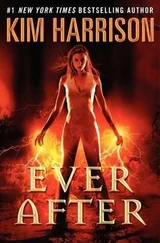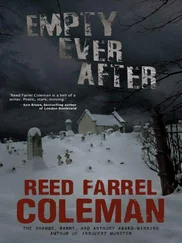So what should I have done. Drawn my poniard and stabbed his unguarded back? “Now might I do it pat …”
What I actually did was this.…
Sam believed in gifts. He persistently showered them on me, not merely on birthdays and special occasions — gifts that were so transparently aimed at winning my filial allegiance that it was a simple matter to rebuff him with formal gratitude and immediate neglect of the article in question. These gifts tended to have a masculine and practical as well as an American bias. So I received a Walt Disney Super Annual as well as a chemistry set and the inevitable trains (but here he hit a genuine soft spot and nearly weakened my resolve: before there were ballet-dancers, you see, there were trains).
One day I was handed a gift that, even in this tiresome succession of bribes, I appreciated was special. It was a model-aircraft kit. That is, a plastic , scale-model aircraft kit of a type soon to flood the British market. This, however, was a kit of American origin, in a large, spectacular box. Inside the box — somewhat belying its lavish dimensions — were fuselage and wing parts and, attached to thin strips from which they could be snapped off, a host of intricately detailed smaller fixtures: propellor, wing flaps, undercarriage and so on — even, complete with moulded flying-jacket and helmet, a little, rigidly alert pilot.
I wish I could remember the name of the plane. I ought to. It was a rather stocky-looking fighter plane, once in service with the U.S. Navy. But what I remember is the box and the almost CinemaScope vividness of the scene emblazoned on its lid. We are high in the air, amidst a tight attacking formation of the nameless aircraft, one of which is caught in fine close-up — diving angle, guns ablaze — at centre-picture. Below us is the blue sheen of the Pacific, and on it the Japanese fleet taking frantic evasive action: flashing guns, smoke, curving wakes. In the distance, a skirmish between our planes and the defending fighters, one of which, gashed with flame, spirals towards the sea.
The compound symbolism of this offering was not lost on a boy capable of reading and digesting Hamlet .
“You see what you can do with plastic, pal? This is a scale -model. Everything’s an exact replica of the real thing.…” He went on, as if he were talking not about plastic but about some kind of protoplasm.
And I did not have to ask, though I did ask, with an ingenuous and reverent hesitancy, and received from Sam a dry-voiced reply and a melting look, as if we were on the verge of a breakthrough: “Was this the plane that Ed …?”
We spread the pieces on the table. He interpreted the little leaflet of instructions. His face, with its clean, naïve features that would age so well (how did this man ever succeed in business?) hung close to mine. It was obvious that he was having to restrain himself from assembling the model himself.
“Well, kid — all yours. Make a good job of it.”
And make a good job of it I did. How I pleased him by not rejecting this bribe but giving it my devoted attention. What pains I took to assemble each piece in the correct order and not to smear the glue. And this diligence had its strangely revelatory side. Under my hands, something came to life: a piece of history, a fragment of former time viewed down the wrong end of a telescope. When I fitted the little pilot into his cockpit — duly painted in advance: pink for the face, brown for his leather jacket — I felt that I was like the hand of fate itself. I could see very clearly an inexorable truth. The man thought he was in control of the plane, but it was the plane that was in control of the man. This was how things stood. The man didn’t belong to himself. The man was plucked up from his real place and set down in the plane no less ruthlessly than I took his miniature counterpart and glued him down by his backside. The man was a fleshy anomaly, entirely at the mercy of his winged carapace. He might as well have been made of plastic.
When the plane was assembled, fastidiously painted in authentic camouflage and affixed with its markings transfers, I hung it by a length of thread from the ceiling in my bedroom. This seemed both an appropriate aerial perch and to suggest the status of a treasured icon — I would look at it last thing at night and first thing in the morning.
But it didn’t remain there for long.
The following morning, in fact, a warm Sunday morning, I took it down. Below me, on the paved terrace at the rear of the house, overlooked by my bedroom, Sam and my mother were lounging in deck-chairs, a late breakfast over. There was, I remember, a peculiar calm about this Sunday morning — the rustle of papers, the clink of coffee cups — a feeling of probation served, as if we had reached a pitch of domestic equilibrium not achieved before.
I held the lovingly constructed aircraft in one hand and with the other applied a lighted match to the propeller. Plastic, as Sam liked to drive home, does not oxidize or decompose and is resistant to electricity; but it is not uninflammable. It burns with a spluttering, tenacious flame and a thick, black smoke reminiscent of burning oil. Thus a plastic plane can be destroyed as well as built with a good deal of verisimilitude.
The propeller, then the engine cowling, ignited, filling my bedroom with evil fumes, of which Sam and my mother had so far no inkling. Holding the plane with the bold patience of a grenade thrower, I waited till the flames — the propeller already a bubbling goo — began to lick the cockpit and the little trapped pilot. Then, standing before the open window and throwing back my arm, I hurled it up and out, so that it soared first high over the heads of Sam and my mother, then plummeted downwards, with a remarkably realistic smoke-trailing effect, to crash just a few feet in front of them on the lawn, one wing dislodged, but still ablaze.
I went to the window — partly because it was my intention to be brazen, partly in order to gasp for air. I heard my mother’s startled “Good God!”; Sam’s “What the—?!” They both leapt from their seats. My mother tried to beat out the fire with a hastily folded News of the World , while Sam, telling her to get out the way, took the lid from the coffeepot and emptied its contents over the wreckage. Only then did they look up. My mother was a picture of exasperated accusation, as if I had simply spoilt a promising day, but Sam was already making for the house in an unprecedented rage. I sat calmly on my bed. He appeared in the doorway, and checked himself momentarily — either because my composure unnerved him or because of the fog of smoke filling the room. As he paused I had time to see — through the murk — that though his face was twisted with anger, it was also blanched with horror. It was the look of a man whose direct thoughts, whose worst fears, have been exposed.
“You little son of a bitch!” he yelled. “You little goddam son of a bitch!”
Through the open window my mother must have heard. And I wonder now how much Sam supposed he was uttering the truth.
But I have not told you yet about complication number three. I have not told you the third reason why my reception here has been such a mixed affair. I am referring now to my pretensions in the field (forget, for a moment, the Pearce manuscripts) which is properly my own. Namely, English Literature.
This is not a simple case, I should make clear, of inadequacy on the one hand and condescension on the other. I am not unequipped. I have read some books in my time, and I was for some ten years, as I may already have hinted, a lecturer in English at the University of London. Even when I abandoned that to become Ruth’s manager — a move which earned me at first as many frowns in the theatrical world as my reappearance now in the world of scholarship has done — I did not lapse. I was — you may have noticed, if you ever looked closely at your theatre programmes — a “literary consultant” (whatever that means) to certain productions of Elizabethan and Jacobean plays, and not merely those in which Ruth appeared.
Читать дальше












